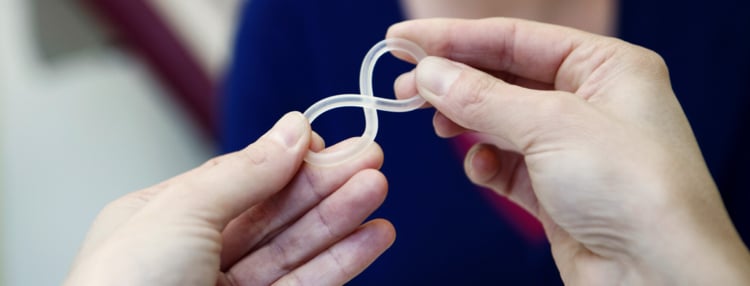-
Tracking cycle
-
Getting pregnant
-
Pregnancy
-
Help Center
-
Flo for Partners
-
Anonymous Mode
-
Flo app reviews
-
Flo Premium New
-
Secret Chats New
-
Symptom Checker New
-
Your cycle
-
Health 360°
-
Getting pregnant
-
Pregnancy
-
Being a mom
-
LGBTQ+
-
Quizzes
-
Ovulation calculator
-
hCG calculator
-
Pregnancy test calculator
-
Menstrual cycle calculator
-
Period calculator
-
Implantation calculator
-
Pregnancy weeks to months calculator
-
Pregnancy due date calculator
-
IVF and FET due date calculator
-
Due date calculator by ultrasound
-
Medical Affairs
-
Science & Research
-
Pass It On Project New
-
Privacy Portal
-
Press Center
-
Flo Accuracy
-
Careers
-
Contact Us
Vaginal Ring Birth Control: Can You Use This Contraception Method?

Every piece of content at Flo Health adheres to the highest editorial standards for language, style, and medical accuracy. To learn what we do to deliver the best health and lifestyle insights to you, check out our content review principles.
Who can use a vaginal ring?
A small flexible ring can become your reliable contraception choice. It works based on the same principle as combined oral contraceptives. It blocks ovulation and thickens the cervical mucus, providing comprehensive protection against unwanted pregnancy.
The vaginal ring is an excellent option for women who can’t take COCs because of gastrointestinal problems (vomiting, diarrhea) that reduce the effectiveness of the pills. The method is also suitable for those who don’t want to worry about contraception on a daily basis. You just need to remember to take a week-long break 21 days after the ring is inserted.
This contraception method is convenient because a woman can insert and remove the ring on her own as easily as a tampon.
Usually, the partner doesn’t feel the vaginal contraceptive ring, but if there is any discomfort, it can be temporarily removed. The vaginal ring effectiveness is maintained for up to 3 hours after the ring has been taken out.
Will your menstrual cycle cease when using a vaginal ring?
Hormone fluctuations, mature follicle formation, ovulation, and endometrium build-up that take place during a menstrual cycle, are all aimed at conception. If pregnancy doesn’t occur, the process is reset by menstruation, and then it starts again. When a woman inserts a contraceptive ring into her vagina, her natural menstrual cycle is interrupted. The synthetic hormones mimic the effect of naturally occurring estrogen and progesterone, but their levels are stable and don’t fluctuate, as they do during a regular cycle.
As a result, follicle development and ovulation don’t occur, and there is no mid-cycle hormone peak. Therefore, when using the ring, the menstrual cycle stops, but the term “hormonal contraceptive cycle” can be used instead. Menstrual-like bleeding, which occurs every month during the 7 days that the ring is removed for, is actually not a real period.
It’s the body’s response to changes in the hormone level. If the ring is not removed, the level will stay the same and menstrual-like bleeding will not occur.
Thus, we can say that the conventional periods come to a halt.
Take a quiz
Find out what you can do with our Health Assistant


Hey, I'm Anique
I started using Flo app to track my period and ovulation because we wanted to have a baby.


The Flo app helped me learn about my body and spot ovulation signs during our conception journey.


I vividly
remember the day
that we switched
Flo into
Pregnancy Mode — it was
such a special
moment.
Real stories, real results
Learn how the Flo app became an amazing cheerleader for us on our conception journey.
References
https://www.drugs.com/answers/what-is-the-mechanism-of-action-of-contraceptive-366754.html
http://womhealth.org.au/conditions-and-treatments/the-pill-myths-and-misconceptions
http://womhealth.org.au/conditions-and-treatments/the-pill-myths-and-misconceptions




